Build Internal Momentum to Monetise Services
Launching new advanced services is innovating your business model. This requires internal momentum to monetise these services and data-driven...
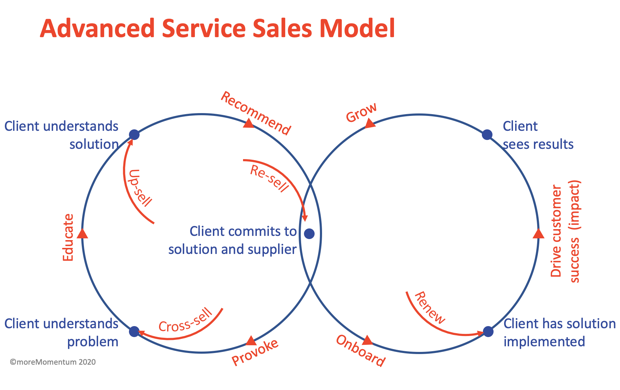
Many manufacturers struggle to commercialise their new and advanced services. Selling advanced services is not only challenging for manufacturers, but also for their clients.
Clients are increasingly focussed on outcome and results. Traditional and transactional sales models do not work for advanced services.
Commercialising new and more advanced service offerings – like predictive maintenance, operational excellence and consultancy services – is a hot topic amongst service leaders of manufacturing companies. It is often discussed during the meetings of the moreMomentum Community and the Field Service News Think Tank.
Many manufacturers struggle to effectively commercialise their new, advanced services. Clients seem to be not interested, do not want to pay for the new services and are not buying them. Maybe a few early adopters do engage, but further growth stagnates.
The result is that these manufacturers:
Often, I see discussions and interventions focus on sales skills, product versus service sales and mindset of the salespeople. However, the problem and solution lays way beyond the skills and mindset of the salespeople.
One of the key problems is that manufacturers (and actually many traditional service companies) have a rather transactional and product/service-oriented sales model. The main focus is; which products and services to sell to clients, that is; generating leads, converting them into sales opportunities and getting the contract. After this, they sell a service contract and the client is left alone. Sales teams re-engage with their clients once there is a new sales opportunity, or it is time to renew the contract.

I see manufacturers trying to sell their new service offering with many arguments about the great features and benefits. Not recognising that it may be quite a leap jump for their clients to engage with this new offering.
Clients need to overcome several challenges and obstacles before they engage with the new advanced services:
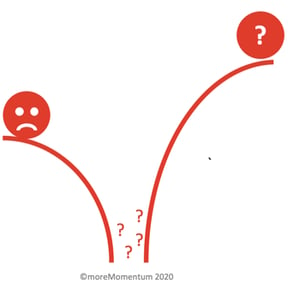 Which problem does it actually solve?
Which problem does it actually solve?If you recognise this problem, then the following sales model can help you to increase the commercial success of your new advanced service offerings and upcoming service innovations.
The core principle of this sales model is building and maintaining an ongoing partnership with your clients. The main focus is “which (other) customer problems to solve and how” instead of “which products and services to sell to clients”.
The key concepts of the Advanced Service Sales Model are:
Provide your clients a journey, from an easy start all the way to a full fledge contract.
Offer a broad portfolio of solutions to critical problems or “jobs-to-do” of your clients.
Have a strong impact on your clients results and make this impact visible for your clients
The Advanced Service Sales Model is based on the sales practices of companies with recurring revenue business models. For them, the first contract with a client hardly generates revenue but is the start of a growth-journey. Examples are providers of subscription-based software solutions (SaaS) and also Caterpillar with its data-driven solutions to help their clients achieve operational excellence.
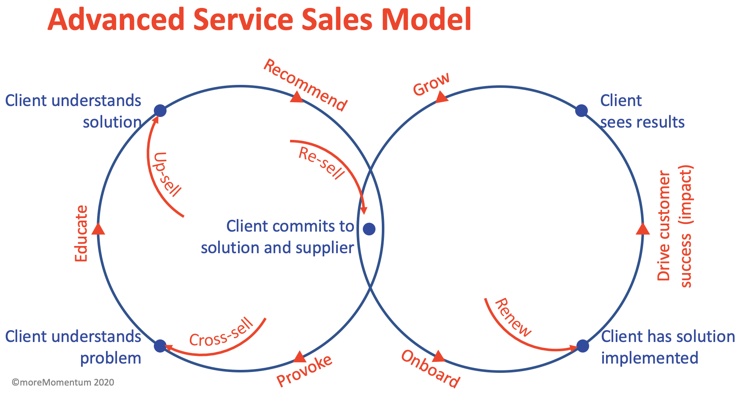
With this sales model you will have a continuous and iterative process of building insights leading to the next level commitment of your client (left circle of the diagram) and building customer success (at the right circle of the diagram).
In this article, I will further elaborate on the 4 most important differences compared to common transactional sales models:
Today are exciting times to survive and thrive with the many (disruptive) changes and big challenges. Not only for you as a manufacturer, but also for your clients. New trends like social media, big data, connectivity, cloud, artificial intelligence and augmenter reality will change the way your clients will work. They have to advance their processes, people, assets and IT in all of their functions like operations, sales and innovation.
The opportunity here is to help your clients to change their perspectives (provoke) on these trends, their strengths, weaknesses, opportunities and threats and re-define their priorities.
You can do this with provoking content and insights like:
Once your clients have become more aware of these challenges and opportunities, they will need to develop their insights in various strategies and types of solutions. Now you have the opportunity to be your clients’ main source of these insights (educate). Be aware that this is NOT about your products, services or solutions but about your vision on how your clients should solve the challenges and pursue the opportunities.
You can do this with insightful content like:
You can provide the provocative and educational insights via:
Two examples you should check out are:
The more innovative your new, advanced services are for you and your clients, the more challenges there will be for your client to fully adapt and embrace them.
You will want to make the first and each following step for your clients to engage to the next level manageable, by providing them a journey. From the first step to the full-fledge solution you will help your clients to step-by-step:
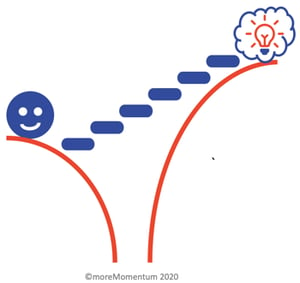 Become more aware of the challenges and opportunities
Become more aware of the challenges and opportunitiesThe journey you offer to your clients could for example consist of the following steps:
Caterpillar offers their clients the following steps to start using more data from their equipment:
More than ever before, clients expect a positive impact on their success from the equipment, services and solutions they buy. For many solutions, clients can fairly easy stop using your service and switch to another provider if the impact is not visible.
Regardless of the product or service you offer is, it becomes increasingly critical to drive customer success. This basically involves two aspects:
The ongoing flow through the two cycles needs to be managed together with your client to continuously take your partnership to the next level and maintain a solid basis.
This requires to continuously:
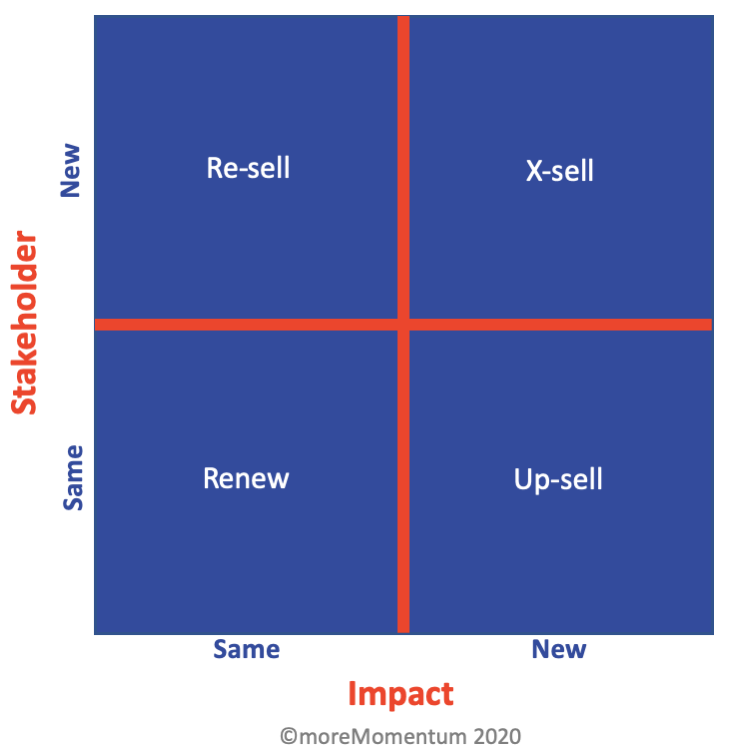
Basically, there are 4 different and concurrent strategies to grow your position with your clients;
Each of these four strategies require different processes, content, skills and will probably involve different teams in your organisation.
It may seem quit daunting to develop your sales model in this direction.
But actually, it is not that difficult, as long as you see it as a step-by-step journey.
I recommend the following action plan:
It may seem quit daunting to develop your sales model in this direction.
To support you in this journey:
As you start offering more advanced solutions and services to your clients, you will need to establish advanced sales models as well. These new sales models are focussed on better understanding and solving more customer problems (instead of selling more products and services to your clients).
This involves an ongoing cycle of provoking and educating your clients, driving customer success and making your impact very visible to your client, so they are ready to take the next step.
This requires:
Manufactures who develop their sales models this way see:
How can you better sell your new services?
Subscribe for the our Impulse Letter
With regular updates about service news, trends and best practices.

Launching new advanced services is innovating your business model. This requires internal momentum to monetise these services and data-driven...
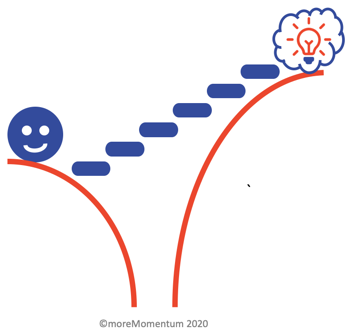
A significant shift in the sales and services sectors characterizes today's business environment. Sales are transitioning from a product-push model...

The capability to generate demand is critical to monetising your (new) advanced services successfully. This goes beyond good web pages, brochures,...